History
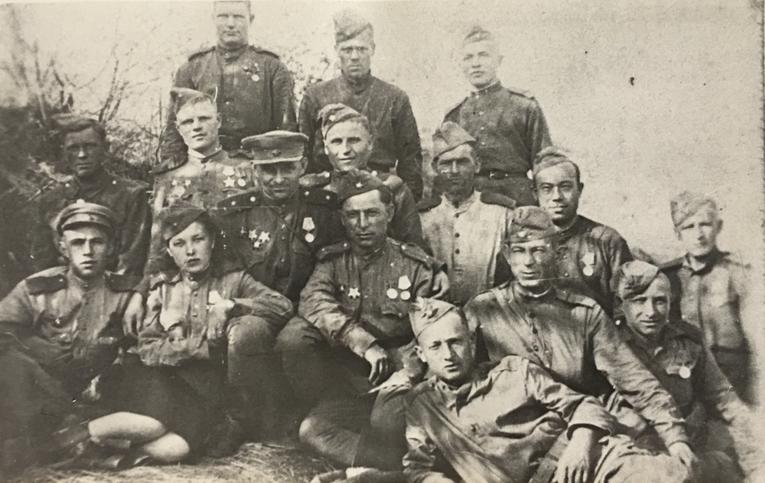
If tomorrow is war
At the end of the 1930s, the country's leadership set task of mobilizing all material and labor resources to ensure the accelerated pace of development of the defense industry and to prepare to repel possible aggression to every enterprise and every industry.
It was decided to create state reserves of fuel and electricity. It was planned to build backup enterprises in the eastern regions of the country.
In 1939, the Izolyator plant made a commitment to master the production of new designs of high-voltage bushings in replacement of imported ones.
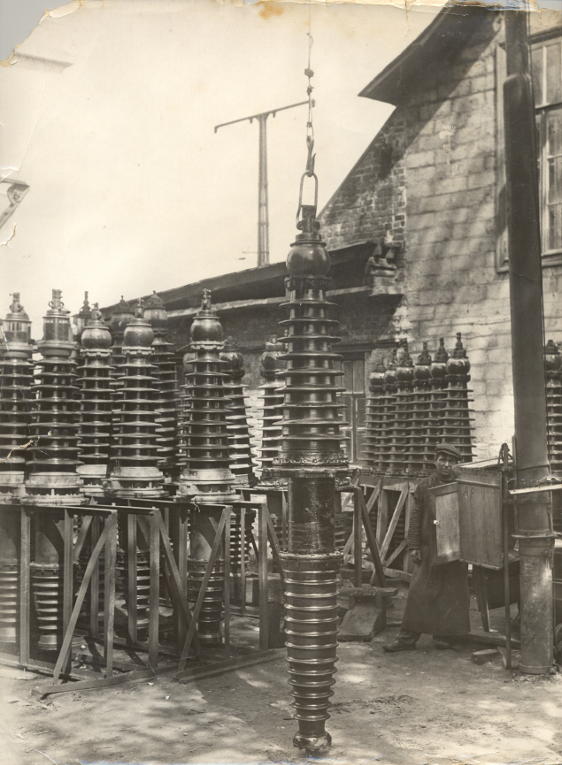
110 kV Izolyator bushings for oil circuit breakers
The fulfillment of government tasks during the years of the third five-year plan took place under special conditions associated with the growing threat of war. The country was preparing for defense.
At the Izolyator plant, already in early 1939, defense work was started. In March 1939, local air defense teams were created: degassing, law enforcement, repair, fire, communications teams.
The War years
In the very first days of the war, many communists, Komsomol members, non-partisan workers, and technical and engineering workers filed applications asking them to be sent to the front. In June 1941, many employees of the Izolyator plant were drafted into the army.
On 3 and 4 July 1941, in the Leningrad district of Moscow, the formation of the 18th division of the militia took place. The creation of the division was carried out on a voluntary basis, from volunteers not subject to draft in the Army.
In the early days of the war, 36 people enrolled in the militia at the Izolyator plant. The Executive Committee of the Moscow Council of Workers' Deputies awarded the Izolyator plant staff with an Honorary Diploma for high patriotism in the formation of the people's militia and the heroism and courage shown in the battles during the defense of the Motherland.
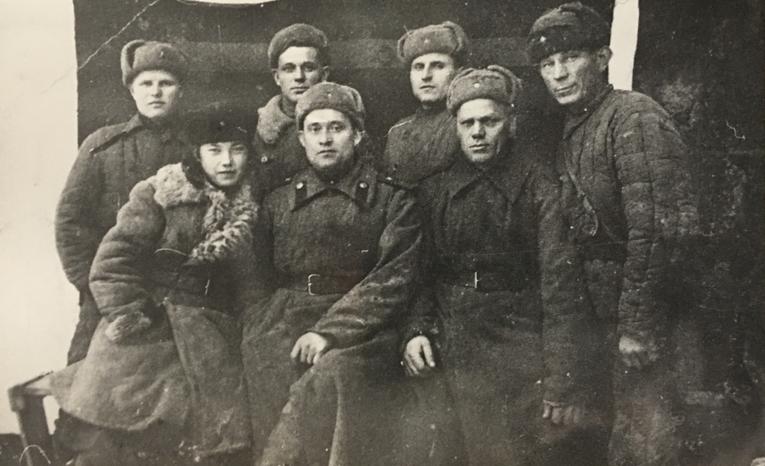
Izolyator plant workers at the front
The plant was repeatedly attacked by German airforce, one of the attacks resulting in the threat of a serious fire at the enterprise, in the elimination of the consequences of which many workers distinguished themselves.
The plant’s staff received the first baptism of fire during an air raid by German aviation on the night of July 21-22, 1941. Fascist aircraft dropped incendiary bombs on the plant. Fighters, commanders and political workers of the air defense squad quickly neutralized them.
The Nazis carried out their second air attack from August 10 to 11, 1941. Several incendiary bombs were dropped on the plant, which were also defused by the air defense teams of the plant.
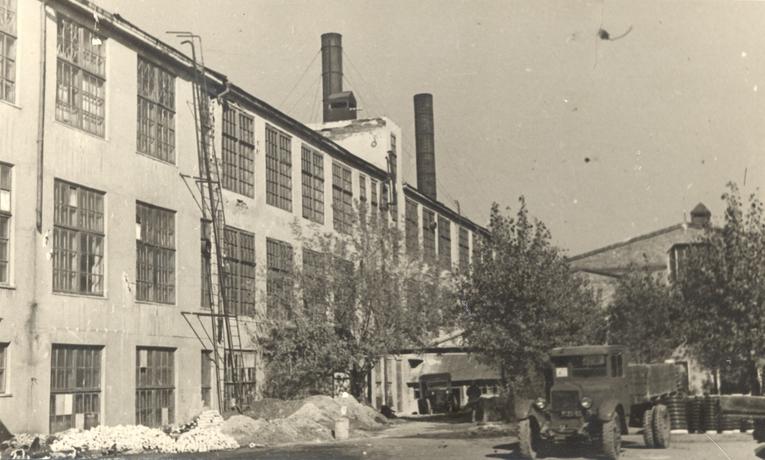
Izolyator plant in the 1940
In 1941, on the basis of a decision of the Council of People's Commissars of the USSR, the Izolyator plant was evacuated and relocated to the city of Kosulino, Sverdlovsk Region. To organize and start production at a new location, workers, engineering and technical workers were allotted from among the workers of the plant and sent to the city of Kosulino, Sverdlovsk Region. Some families of factory workers were evacuated to the same town.
One of the most difficult economic tasks of the military economy was to provide electricity to the industry evacuated to the eastern regions of the country. To this end, in the Volga region, in the Urals, in Siberia, in the regions of Central Asia, great work was done to expand and build new power plants.
The demand for the plant’s products only increased during the war: it had to provide with its products both power plants in the eastern regions, center and also the country's power systems in the liberated territories, fulfilling orders from the defense industry at the same time.
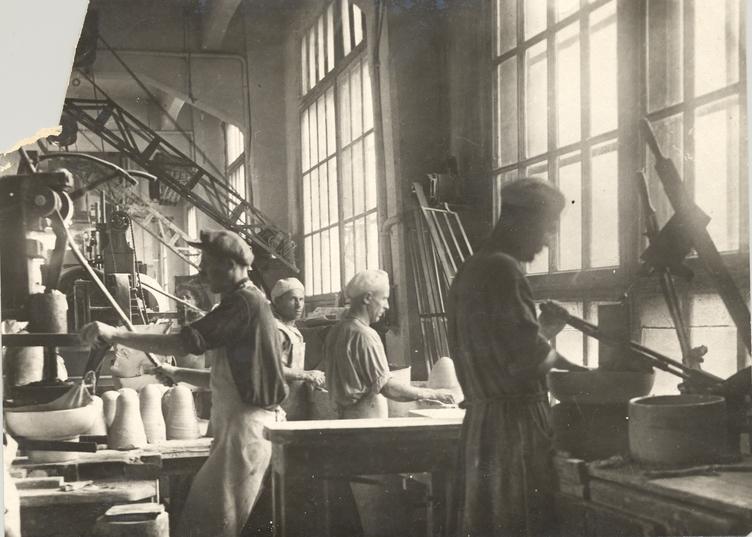
Molding production station at Izolyator plant
By the decision of the State Defense Committee, dated 18 November 1942, the task was set to promptly bring the Izolyator plant capacity to the level of 1940, which was received as a combat order at the plant: in 1944 the Izolyator plant was declared the winner in the All-Union Socialist Competition and was awarded the 3rd place.
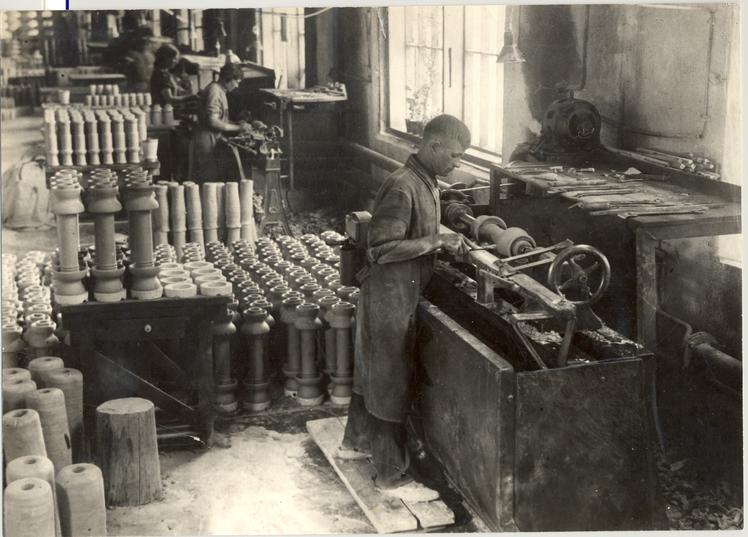
Semis production
The crew of stampers of the 24th shop Yenishina, Ilyina, Kareva, Perfilieva was awarded the title of ‘Front Brigade’, since they met the production norm by more than 2 times. Many of the teams exceeded the norm by 1.5–2 times. Among them, the brigade of the Komsomol member Vera Mukhina was especially distinguished. The best Komsomol-youth brigades included the teams of A. A. Antonova, processing of reinforcement frames, T. S. Mitina — press-workers, T. N. Rakova and others.
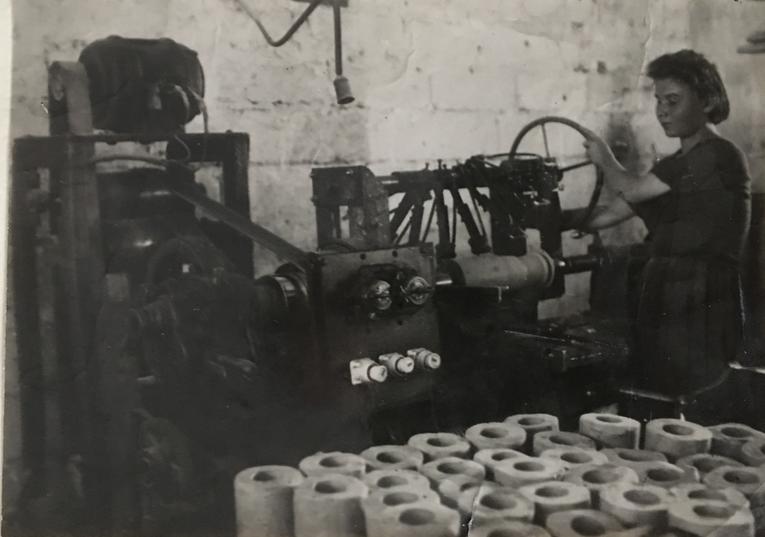
Turning blanks
By 1945, the plant mastered up to 60 new types of bushings and mastered the production of special-purpose bushings for radio installations and other defense purposes. In the same year, the entire pre-war product ranges of bushings was completely restored, the production of 154 and 220 kV oil-filled bushings was started, which was discontinued in the first years of the war.
Keeping memory. Being proud. Honoring
At the Izolyator plant, the workers of the factory — front-line soldiers and workers of the rear of the Great Patriotic War — are sacredly honored. Their names are inscribed on a monument at the factory square.
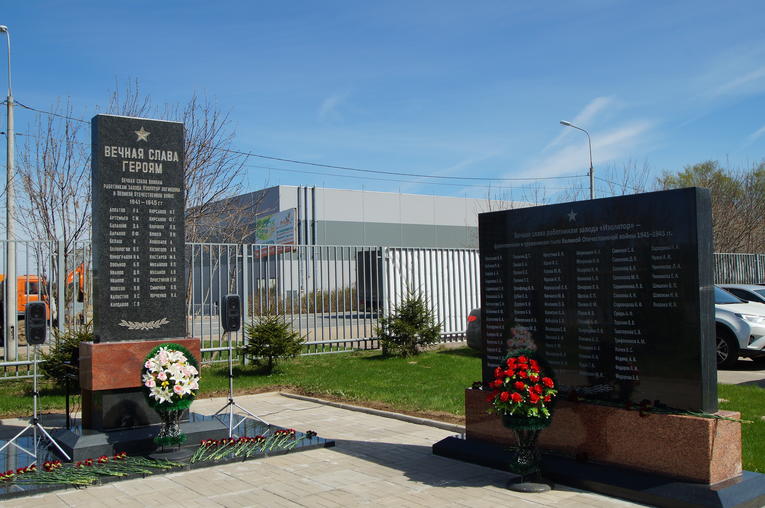
The monument to Izolyator plant workers — front-line soldiers and labor veterans of the Great Patriotic War of 1941–1945
We bow our heads before the memory of the fallen and with all our hearts we thank all the veterans of war and labor living among us.